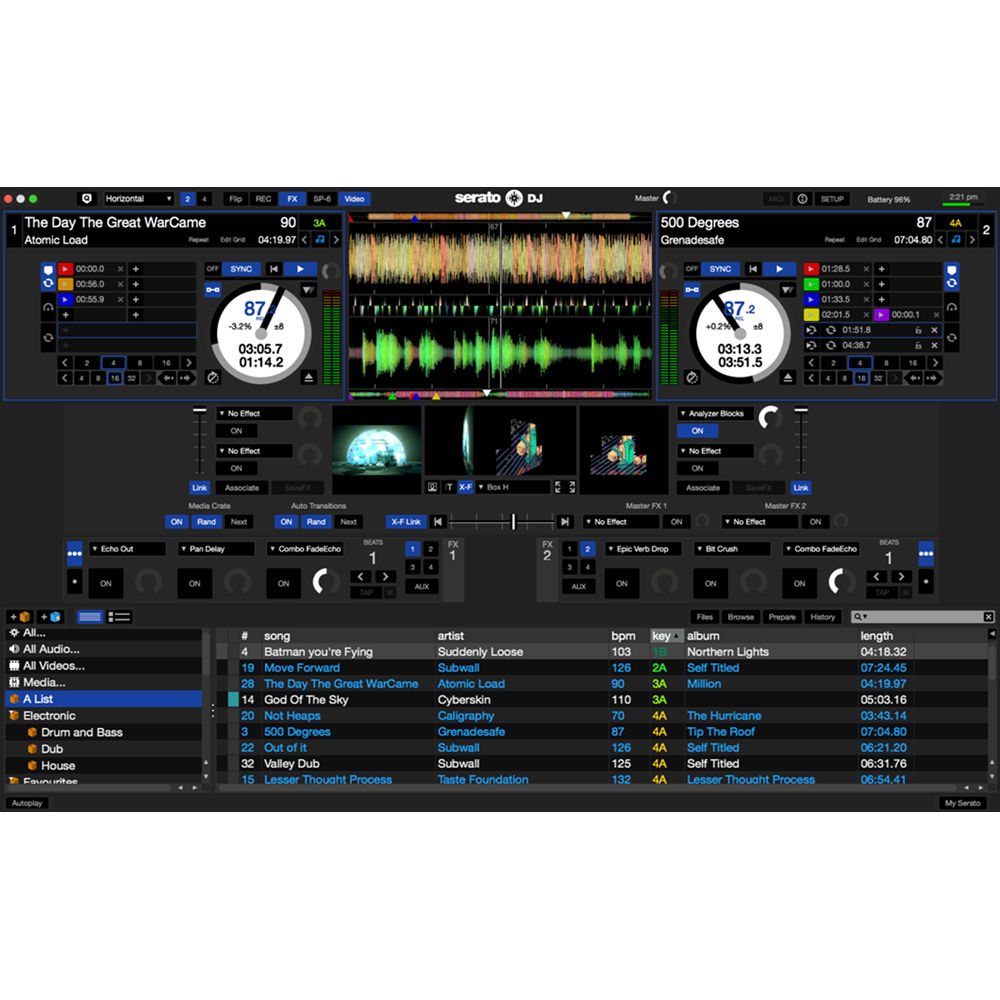
- #Dj serato scratch live full#
- #Dj serato scratch live software#
- #Dj serato scratch live code#
- #Dj serato scratch live plus#
You would meet up with another DJ and you had a hard drive with a certain amount of gigs of mp3, and just swap. "Part of what made the switch to digital quicker and easier was I did a couple of big file trades with a couple of DJs. So there was a process of getting used to DJing and also a process of building up a library of music.


#Dj serato scratch live full#
"The tiniest reflexes that go through your mind when you're playing a set and thinking of your next songs - these little mini thought process that you're not even conscious of - are completely different when you're looking through a list of titles on a computer compared to physically flicking through records with album covers that tell you what the song is before you even have to read the full name. And the timecode says, 'On this specific part of the song, the record is going 'Forward, backwards, forward, backwards.' And it goes: 'Chr-prt, chr-prt' and it sounds like a real scratch."
#Dj serato scratch live code#
If you scratch a record, which just means that you're moving a record back and forth, well, you're moving the time code back and forth and that time code gets sent to the computer.
#Dj serato scratch live plus#
The timecode that gets sent to the computer says, 'I'm playing at pitch plus two percent.' And the gets that information and produces the music accordingly. If you increase or decrease the pitch on the turntable, which is what you do when you mix records, that information gets transferred as well. "Everything that you do on a record is reflected the same way as if it were a real record. It goes back to the signal path where the mixer receives music from the turntables and mixes them a certain way. On the computer you say, 'My left turntable' - which is just a virtual turntable - 'will be playing this Kanye West record.' The computer receives the tone from the record, which says, 'Right now the needle is at 1:32 into the record moving forward.' So the computer produces that music and sends it back to the mixer and then once it hits the mixer it becomes the same as the traditional setup. On the computer you choose what song you want to assign to each turntable. The turntable first sends the tone to the computer. But that tone has a time code that a computer can read. "The record that you put on the turntable has a tone rather than having music.
#Dj serato scratch live software#
You just add a computer to the chain, and instead of playing directly off the record, the software allows you to assign a digital file to the "record" that's spinning on each turntable. The setup is essentially the same as it ever was.

He began his musical career with as close a relationship to vinyl as you can get: from the age of 12 he was a turntablist, a DJ who spins, mixes and manipulates vinyl records to produce new sounds. Macklovitch's career has overlapped the transition from vinyl to digital DJing at every turn. And there's almost no one in the world better equipped to tell that story than Alain Macklovitch, the Montreal-born, Brooklyn-based DJ, producer and record label owner better known as A-Trak. The story of Serato (and other vinyl emulation programs, like Traktor) is the story of how the leading edge of innovation always has to contend with both the practical limits of technology and the emotional and physical pull of tradition. But in the last decade, while younger audiences - especially indie rock fans - have started buying new music on vinyl, those DJs have largely traded in their crates of records for digital files they play through vinyl emulation software like Scratch Live, made by the New Zealand-based company Serato. One key group that helped vinyl stay alive once the public began to abandon it in favor of the CD was DJs who would spin vinyl in clubs and on the radio. This week we talked to a bunch of people about how vinyl has managed to survive, despite the fact that, technologically speaking, the format is something of an antique. Alain Macklovitch, demonstrates how Serato's Scratch Live software imitates playing music from records.


 0 kommentar(er)
0 kommentar(er)
